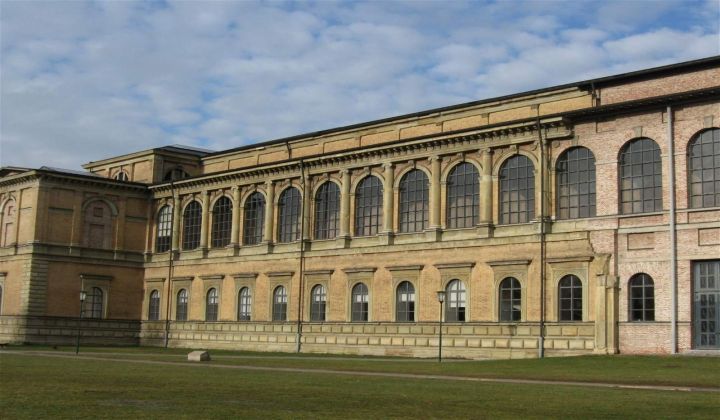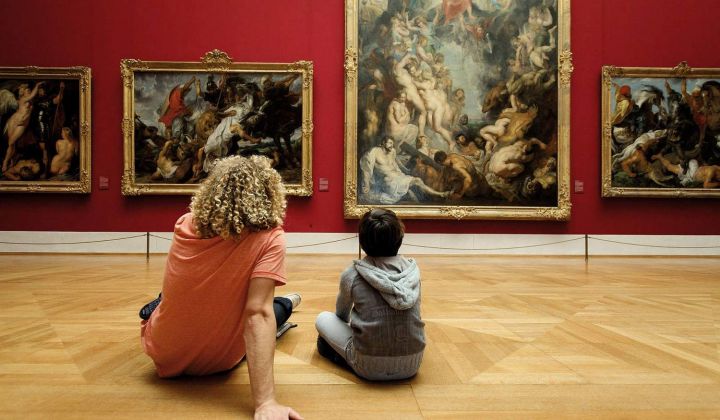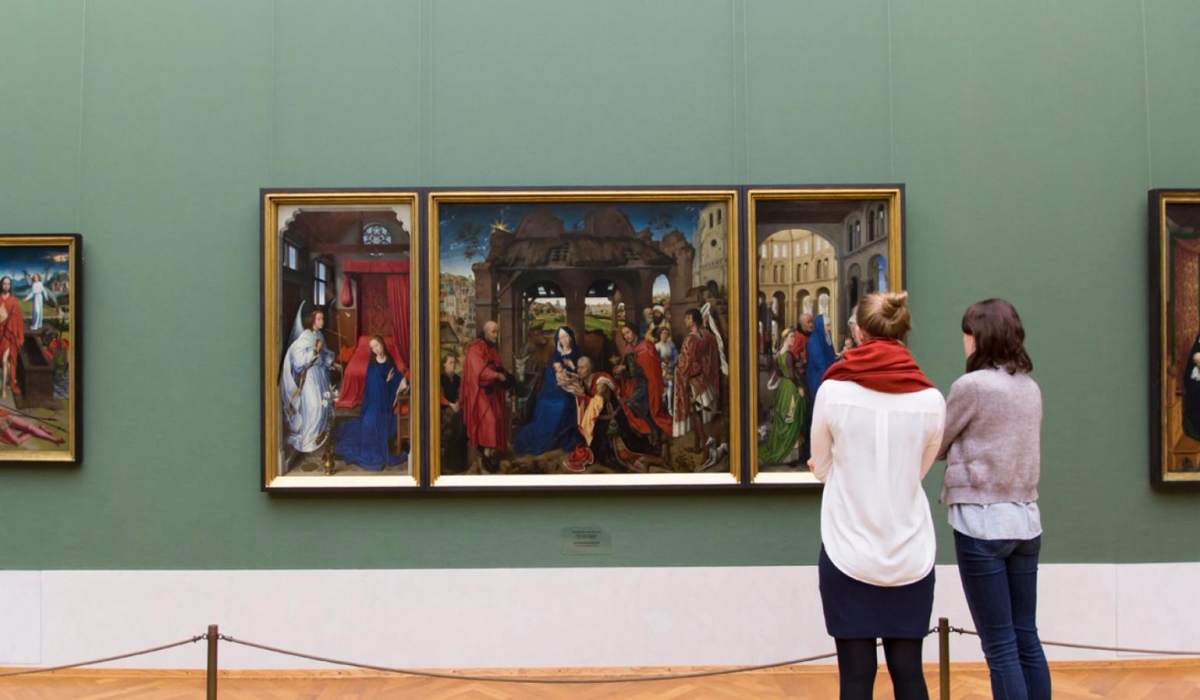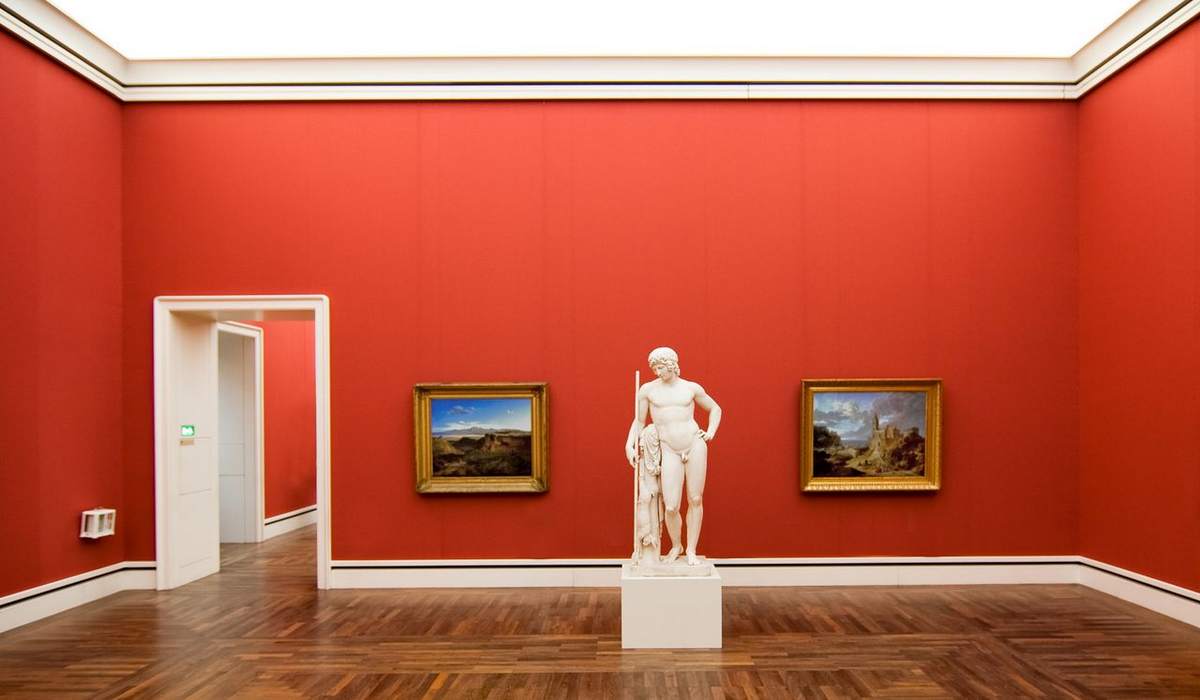When it comes to Europe's most famous art museums, Munich's Alte Pinakothek is definitely in the top three.
And it's not just painting connoisseurs who love it: ordinary people also feel confidently in its halls. There are two reasons for this: the museum has no hard-to-find contemporary paintings, and it has a number of well-known works.
Here are just a few examples of what the Alte Pinakothek is proud of: works by Albrecht Dürer, Pieter Bruegel the Elder, Rubens, Rembrandt, Titian, Velázquez, Van Dyck and El Greco. Even if the names are unfamiliar, the subjects of the paintings are familiar to many.

History of the museum
Duke Wilhelm IV of Bavaria began the collection, which now has over 700 paintings.
He commissioned Albrecht Altdorfer to paint the Battle of Alexander the Great with King Darius in 1529; other German painters were also commissioned to paint historical subjects.
The Wittelsbachs, to whose dynasty Wilhelm IV belonged, continued to collect art, but their works were kept in castles rather than museums.
This changed in the early 19th century, when King Ludwig I of Bavaria took it upon himself to make art accessible to the public. The architect Leo von Klenze designed a building in the classical style to house a rich collection of paintings.
The Pinakothek opened to the public in 1836, with free entry on Sundays. In the early years, Munich residents were more attracted to Sunday picnics on the lawn in front of the museum, but over time the Pinakothek became extremely popular.
The situation is much the same today. The museum is one of Munich's main attractions, Sunday admission is a symbolic €1, and the people of Munich still enjoy the sunny days on the lawns of the Alte Pinakothek.
Collection of paintings
The Old Pinakothek's permanent exhibition consists of works by artists from the 13th to 18th centuries. To see it all, you have to go around 19 huge halls and 47 rooms.
The interior design is ascetic: monochrome walls, sofas in the centre of the rooms, and elaborate lighting — nothing distracts from the masterpieces of painting.
The museum's lighting system is state of the art and was installed at the end of 2017. Even huge canvases can now be seen in great detail.
The paintings in the museum are not arranged chronologically, but are grouped territorially. German, Dutch, Flemish, Italian, French and Spanish paintings are displayed in separate rooms.

The German collection is the largest, and the collection of works by Dutch masters is considered one of the most important in the world. The French and Spanish collections are small but contain some truly priceless paintings.
Instead of just wandering around the museum, you can use an audio guide to learn more about the artists and the history of the paintings. The audio guide is currently available in English, French, German, Italian and Spanish.
The main masterpieces
In art galleries, you can wander around at your leisure, stopping to look at paintings that catch your eye. But you can also make a point of looking for famous works, familiar from reproductions and stunning in the original.
The official website of the Alte Pinakothek gives information on the 100 most famous pieces and their locations, but we'll focus on some of the most famous canvases.
The Last Supper by Giotto di Bondone (1303). One of the oldest works in the museum, an example of medieval iconography.
Albrecht Dürer's Self-Portrait (1500). Two other self-portraits by Dürer are in the Louvre (Paris) and the Museo del Prado (Madrid). Also on display at the Pinakothek is Dürer's last major work, The Four Apostles, which the painter brought back to his home town of Nuremberg as a gift.
Tell your child that the apostles in this painting are thought to represent the four temperaments or the four seasons.
The Crucifixion by Lucas Cranach the Elder (1503). Lucas Cranach the Elder painted the biblical subject, which painters had not once turned to, but twice. He returned to the subject in 1520 with Cardinal Albrecht of Brandenburg before the Crucifixion: Also in Munich.
Note the other paintings in the Pinakothek that develop the theme of Christ's suffering — Titian's Crowning with Thorns, El Greco's The Disrobing of Christ, Rembrandt's The Deposition, Botticelli's Lamentation over the Dead Christ.
Madonna with clove by Leonardo da Vinci (1475). One of the master's earliest works, painted during his apprenticeship in Verocchio's studio. Long held in a private collection and believed to be by Verocchio.
The Land of Cockaigne by Pieter Brueghel the Elder (1567). The plot of the painting is based on a German fairy tale about a wealthy land where people can prosper without having to work. As you look at the details in the painting, try to make up your own story with your child.
The Last Judgement by Hieronymus Bosch. Unlike the triptych of the same name in Vienna, the Munich painting shows neither heaven nor the righteous, only the endless horror of hell.
The painting can be compared to another masterpiece in the Alte Pinakothek, Rubens' The Last Judgement.
Pros for visiting the gallery with a child
Although the Alte Pinakothek is a world-famous art gallery, there are no long queues.
On any given day, the museum's halls are half empty and it is safe to stand in front of any painting or sit on a sofa and gaze at a huge painting from a distance.
The collection of paintings in the Alte Pinakothek is relatively small and the entire museum can be visited in 2-3 hours.
With younger children, it's a good idea to take a short tour and focus on the most famous paintings or paintings with a particular theme. These could be scenes from Greek mythology or biblical motifs.
The Pinakothek has a playground in the courtyard: if your child gets bored with art, you can take him or her for a walk in the fresh air.











